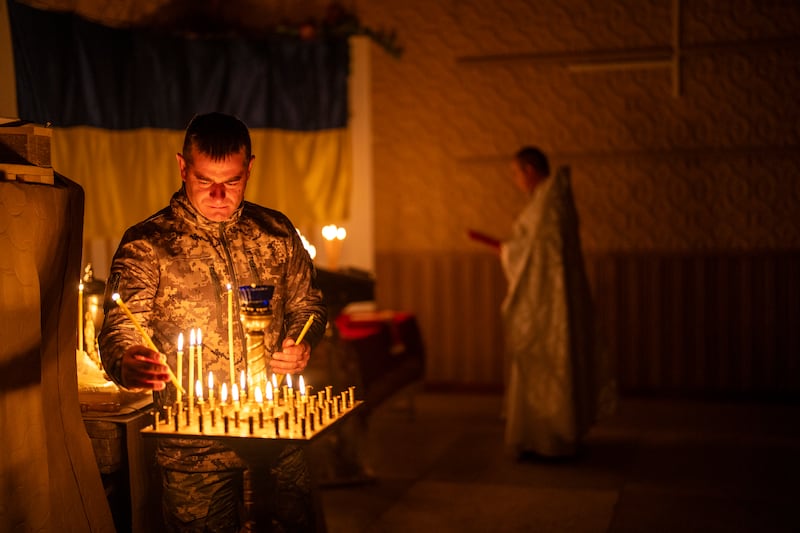The head of the UN’s atomic watchdog agency has condemned a drone strike on one of six nuclear reactors at the Russian-controlled Zaporizhzhia Nuclear Power Plant in Ukraine, saying such attacks “significantly increase the risk of a major nuclear accident”.
In a statement on social media platform X, Rafael Mariano Grossi confirmed at least three direct hits against the main reactor containment structures took place.
“This cannot happen,” he said.
IAEA experts confirmed physical impact of drone attacks at ZNPP today, incl. at 1 of its 6 reactors.One casualty reported. Damage at unit 6 has not compromised nuclear safety, but this is a serious incident w/ potential to undermine integrity of the reactor’s containment system. pic.twitter.com/FvMsb4I4vs
— IAEA – International Atomic Energy Agency ⚛️ (@iaeaorg) April 7, 2024
He said it was the first such attack since November 2022, when he set out five basic principles to avoid a serious nuclear accident with radiological consequences.
Officials at the plant said the site was attacked on Sunday by Ukrainian military drones, including a strike on the dome of the plant’s sixth power unit.
Russia blamed Ukraine for the attack, but the UN’s International Atomic Energy Agency did not attribute blame. Kyiv officials made no immediate comment.
According to the plant authorities, there was no critical damage or casualties and radiation levels at the plant were normal after the strikes.
Later on Sunday, however, Russian state-owned nuclear agency Rosatom said that three people were wounded in the “unprecedented series of drone attacks”, specifically when a drone hit an area close to the site’s canteen.
The International Atomic Energy Agency (IAEA) said on Sunday that its experts had been informed of the drone strike and that “such detonation is consistent with IAEA observations”.
In a separate statement, the IAEA confirmed the physical impact of drone attacks at the plant, including at one of its six reactors. One casualty was reported, it said.
“Damage at unit six has not compromised nuclear safety, but this is a serious incident with potential to undermine the integrity of the reactor’s containment system” it added.
The power plant has been caught in the crossfire since Moscow sent troops into Ukraine in 2022 and seized the facility shortly after.
“This is a clear violation of the basic principles for protecting Europe’s largest NPP. Such reckless attacks significantly increase the risk of a major nuclear accident and must cease immediately,” DG @rafaelmgrossi said.
— IAEA – International Atomic Energy Agency ⚛️ (@iaeaorg) April 7, 2024
The IAEA has repeatedly expressed alarm about the nuclear power plant, Europe’s largest, amid fears of a potential nuclear catastrophe.
Both Ukraine and Russia have regularly accused the other of attacking the plant, which is still close to the front lines.
The plant’s six reactors have been shut down for months, but it still needs power and qualified staff to operate crucial cooling systems and other safety features.
Kremlin spokesman Dmitry Peskov on Monday called the drone attacks on the plant “a very dangerous provocation”.
“This is a very dangerous practice that has very bad, negative consequences in the future,” Mr Peskov said during his daily conference call with reporters.
An official at Energoatom, Ukraine’s atomic energy company, blamed Russia for the attacks, saying they were “a provocation” orchestrated to malign Ukraine.
The official spoke to The Associated Press on condition of anonymity because he was not authorised to speak on the record.
Also on Sunday, three people were killed when their house was hit by a Russian projectile in the frontline town of Huliaipole in Ukraine’s partly occupied south-eastern region of Zaporizhzhia, regional governor Ivan Fedorov said.
Later on Sunday, two people were wounded in another shelling of Huliaipole.
Separately, three people were wounded in Russian shelling in Ukraine’s north-east region of Kharkiv, according to regional governor Oleh Syniehubov.
In Russia, a girl died and four other people were wounded when the debris of a downed Ukrainian drone fell on a car carrying a family of six people in Russia’s Belgorod region bordering Ukraine, regional governor Vyacheslav Gladkov said.







